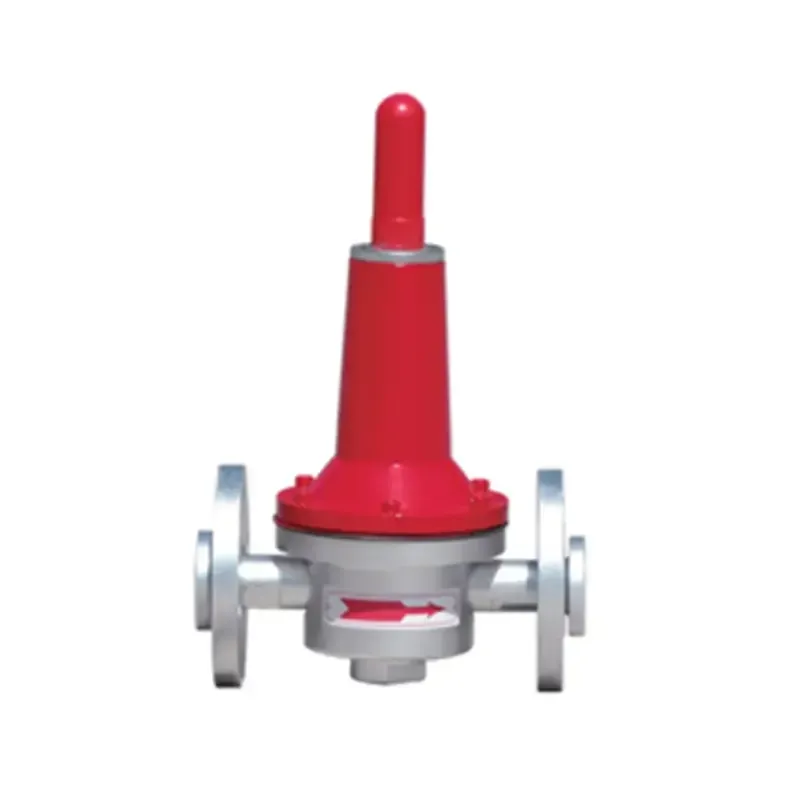
Oct . 10, 2024 02:31
Back to list
pressure reducer
Understanding Pressure Reducers Essential Components in Fluid Systems
Pressure reducers play a critical role in various fluid systems, from domestic water supply lines to industrial gas distribution networks. Their primary function is to regulate and reduce the high inlet pressure of fluids to a specified lower outlet pressure, ensuring the safe and efficient operation of various applications. This article delves into the working principle, applications, benefits, and maintenance of pressure reducers.
Working Principle
At the core of a pressure reducer is a valve mechanism that automatically adjusts the flow of fluid to maintain a consistent pressure downstream, regardless of fluctuations in the upstream pressure. When the inlet fluid pressure exceeds the preset threshold, the valve opens to allow the fluid to pass through, simultaneously reducing the pressure. Conversely, when the outlet pressure rises above the desired level, the valve closes slightly to restrict flow, thereby maintaining stability.
Most pressure reducers operate using a spring-loaded diaphragm system. The diaphragm moves in response to changes in pressure. As the outlet pressure increases, it exerts force against the diaphragm, causing it to compress a spring. This action adjusts the valve opening accordingly, ensuring a controlled release of fluid while preventing excessive pressure spikes.
Applications
Pressure reducers are widely used across various sectors. In residential settings, they are commonly found in water supply systems to protect household plumbing from high pressure, which can cause leaks or damage over time. A typical residential pressure reducer might maintain pressure between 40-60 psi to ensure efficient water delivery without risking the integrity of pipes and fixtures.
In industrial applications, pressure reducers are vital in managing gas and fluid delivery systems. For example, in oil and gas operations, these devices control the pressure of incoming natural gas supplies to ensure safe and efficient processing. Similarly, in manufacturing facilities, pressure reducers regulate the pressure of compressed air systems, which are integral to powering pneumatic tools and machinery.
Moreover, in the medical field, pressure reducers are used in oxygen delivery systems, ensuring that patients receive the correct amount of oxygen at safe pressures. In each of these instances, the pressure reducer not only enhances system efficiency but also ensures safety and reliability.
pressure reducer

Benefits
The benefits of using pressure reducers are manifold. Firstly, they protect downstream equipment and piping systems from high pressure, thereby extending their lifespan and reducing maintenance costs. Secondly, by stabilizing pressure, they improve the efficiency of fluid delivery, which can lead to energy savings and enhanced performance of equipment.
Additionally, pressure reducers contribute significantly to safety in fluid systems. By preventing overpressure situations, they reduce the risk of catastrophic failures or accidents, safeguarding both personnel and infrastructure. This aspect is particularly crucial in industries dealing with hazardous materials or high-pressure gases.
Maintenance
Regular maintenance of pressure reducers is essential to ensure their long-term performance. This involves periodic inspection for leaks, checking for signs of wear or corrosion, and validating the accuracy of the pressure settings. Routine testing can identify potential issues before they escalate, reducing downtime and repair costs.
Cleaning the filters and ensuring that the valve mechanism is free from debris and obstructions also contribute to effective operation. In some cases, manufacturers recommend recalibrating the pressure settings periodically to align with changes in system requirements or to compensate for wear over time.
Conclusion
In conclusion, pressure reducers are indispensable components in various fluid systems, promoting safety, efficiency, and reliability. Their ability to maintain steady pressure in fluctuating conditions underlines their importance in residential, industrial, and medical applications. As technology advances, the design and sophistication of pressure reducers continue to evolve, ensuring they meet the ever-changing demands of modern fluid management systems. Understanding the significance of these devices allows users to appreciate their vital role in ensuring efficient and safe fluid delivery across different sectors.
Latest news
-
Safety Valve Spring-Loaded Design Overpressure ProtectionNewsJul.25,2025
-
Precision Voltage Regulator AC5 Accuracy Grade PerformanceNewsJul.25,2025
-
Natural Gas Pressure Regulating Skid Industrial Pipeline ApplicationsNewsJul.25,2025
-
Natural Gas Filter Stainless Steel Mesh Element DesignNewsJul.25,2025
-
Gas Pressure Regulator Valve Direct-Acting Spring-Loaded DesignNewsJul.25,2025
-
Decompression Equipment Multi-Stage Heat Exchange System DesignNewsJul.25,2025

